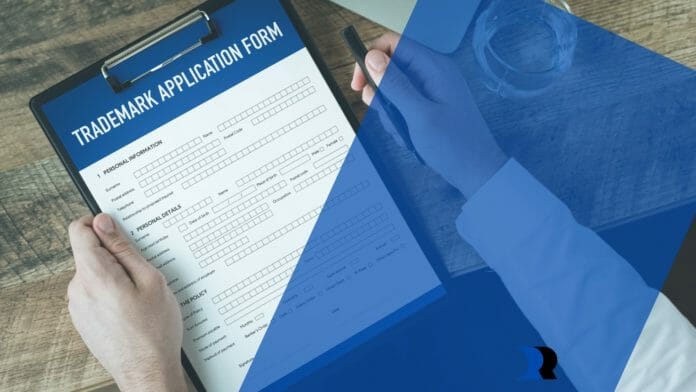When you want to grow or protect your company, you typically fill out the trademark application. However, you may receive an office action from the United States Patent and Trade Office (USPTO) later on questioning your application. The office action is issued if your trademark application isn’t accepted. It clarifies why your registration was rejected and outlines the necessities your application must meet.
Getting an office action, non-final or final, may slow down your application process, but it’ll give you a chance to evaluate your trademark with your attorney. The non-final office action comes at the beginning of the evaluating process where issues on your application are highlighted for the first time. On the other hand, the final office action is issued to reject the application once the evaluation process is complete and you haven’t addressed the previously indicated concerns.
There are measures you can take when you receive an office action. Here are a few:
1. Schedule The Response
The first thing to do is to know the deadline by which you should respond to the office action. The sooner you respond, the sooner USPTO decides whether or not your application is to be published. However, there are certain situations where you can send the trademark office action response a few days before the deadline. Such conditions may include:
- When the application is under § 1(b), it’ll not be in use for a year. This delays the notice of allowance. As a result, it saves you from paying for the extension to file the use statement.
- When the issue raised is confusion under § 2(d) and the registration cited maintenance deadline is in six months, you’ll wait and see if the registration citation is maintained. You may not need to send a substantial argument if not maintained.

2. Get An Experienced Attorney
USPTO advises you to have an attorney with experience in the trademark business in such situations if you didn’t have one from the beginning. A qualified attorney ensures you’re taking the right action. Attorneys who’ve worked closely with this office have the expertise to turn tables to favor you. They help you comprehend your rights and offer solutions to such problems.
So, if you’re thinking about trademark registration or have received office action, hire an experienced lawyer. They reduce the hassle of appealing by detecting such issues before they even arise, and they’ll also know how to respond to the arising concerns.
3. Seek Clarification
Ask or seek classification. You can request your lawyer to cross-check with the examining attorney who’ll answer and explain matters from their point of view. However, the examining attorney will only give you their reasons for issuing the office action. They won’t help you in drafting your response.
Together with your lawyer, examine the reasons provided for the rejection. Come up with a possible solution or solutions to trademark rejection only after shedding light on areas you didn’t previously understand.
4. Request For Consideration
Requesting consideration from the examining attorney is one way you can respond to an office action. This will help you overcome rejections and give you enough time to cooperate with the presented requirements. Consider filling this request in three months to ensure you receive a verdict before the response period ends. If the request isn’t approved, there’ll be an explanation, and you can use that information to appeal.
Sending a consideration request towards the end of the deadline has the risk of not receiving the examiner’s decision on time, and you’ll have to appeal. However, when you appeal and request for consideration, the Trademark Trial and Appeal Board (TTAB) suspends the appeal, and the case is then sent back to the examining attorney.
5. Make An Appeal
The TTAB is a court that handles matters relating to trademarks at the USPTO. Their judges can decide whether the organization has the right to register with the government only. They’re not in a position to determine whether you can register a new mark or maintain the one challenged.
When you receive a final office action rejecting your trademark, you can appeal to the Trademark Trial and Appeal Board. The process is a little lengthy, but with the right lawyer on your side, it’ll be just a matter of time before the issue is cleared.

6. Formulate Your Response
Six months are enough for you to come up with a response. The longer your response takes, the longer the trademark application process. You’re advised to work on your feedback earlier as it may take your attorney a while to respond to the office’s action.
Your response will depend on whether the issue raised is substantive or not. The substantive issues include:
- Non-differentiated refusal in § 2(e): You may want to examine all possibilities before submitting a substantive argument. In doing so, you may find loopholes that’ll rid the confusion. Consider checking if the registration citation still exists or has been canceled, and evaluate the previously filed applications, among others.
- The issue of confusion § 2(d): Confusion arises when the name or mark resembles an existing one. This can result from an application you filed before. Unless that application is removed, the examiner will suspend your application.
On the other hand, the non-substantive issues include:
- Specimen refusal: The USPTO examines the submitted specimens. They reject all that appear altered or those that aren’t useful to commerce. If unaccepted, you’re allowed to submit substitute specimens.
- Goods and services description: The description of your goods and services may not comply with the set standards. This includes vague and overboard goods descriptions. To counter this, ensure that you come up with accurate specifications that comply with the standards.
- Additional information requests: You may be requested to hand over more information on the meaning of the mark or name. This will help the examiner determine whether the mark is descriptive enough.
7. Address All Concerns
Some issues may be easy to resolve while others may require you to formulate substantial arguments. For example, in the case of confusion and distinctiveness, you’ll need to explain why your mark or specimens are similar to an already existing one.
Be careful when addressing these concerns. Carefully examine them as failure to address any may result in rejection.
Conclusion
Don’t panic when you receive an office action. Ensure you address all the concerns raised in the non-final office action to avoid the final office action. However, if you receive a final office action, you may want to request consideration or file an appeal with the TTAB. Filing an appeal may take a long time. To avoid this, ensure you meet all the standards set by USPTO. Of course, you’ll need an experienced trademark attorney during the trademark application and after receiving an office action.


